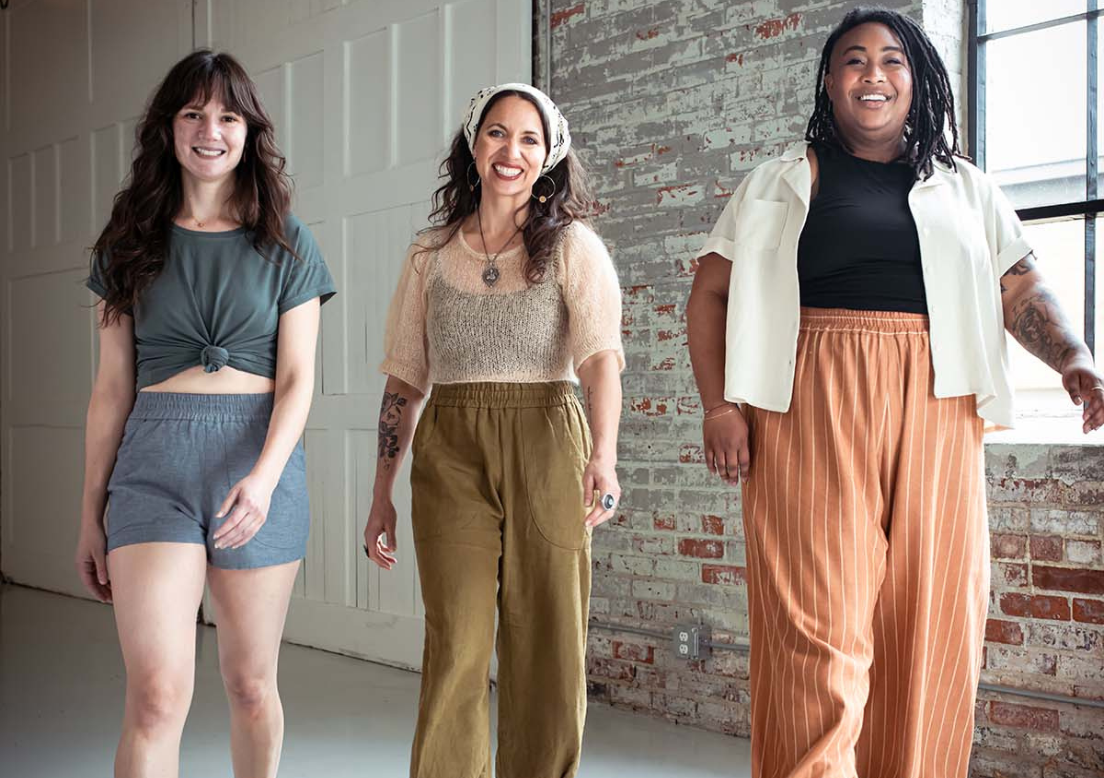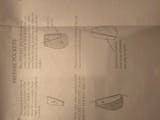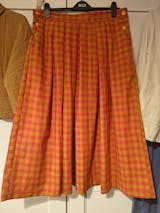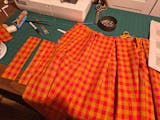Merchant & Mills Shepherd Skirt
We print out the A0 pattern sheets, but you’ll need to download the digital instructions, as we don’t print these. The PDF files will be emailed immediately after purchase, and the printed A0 pattern sheets will be dispatched next working day.
Buy the Shepherd Skirt sewing pattern from Merchant & Mills. A pleated A-line skirt with slanted pockets and side button fastenings. Soft and floaty in linen, or smart and hardy in cotton twill. Can be made lined or unlined.
This sewing pattern is available to buy in the following formats:
– PAPER (next working day dispatch on orders and FREE UK delivery over £50)
– PDF (available to download immediately after purchase). What is a PDF?
– PDF pattern + Printed A0 copy shop (We print out the A0 pattern sheets, but you’ll need to download the digital instructions, as we don’t print these. The PDF files will be emailed immediately after purchase, and the A0 pattern sheets will be dispatched next working day). What is Copy Shop?
Suggested fabrics: Linen, cotton poplin, cotton voile, cotton sanded twill, hemp blends, tencel/linen, needlecord, 4-8 oz. denim, lightweight wool, Indian handlooms (if narrow you may have to piece).
Fabric requirements:
Sizes 6 – 18
Self: 110 cm (43 1/2″) wide fabric (with nap): 4.3 m (4 3/4 yd) // 110 cm (43 1/2″) wide fabric (without nap)*: 4 m (4 1/2 yd) // 120 cm (47″) wide fabric: 2.4 – 4.3 m (2 3/4 – 4 3/4 yd) // 140 cm (55″) wide fabric: 2.1 – 2.3 m (2 1/4 – 2 1/2 yd) // 150 cm (60″) wide fabric: 2.1 m (2 1/4 yd).
Lining (lined version): 110 cm (43 1/2″) wide fabric: 3.8 m (4 yd) // 120 cm (47″) wide fabric: 3.8 m (4 yd) // 140-150 cm (55″-60″) wide fabric: 2.3 m (2 1/2 yd).
Lining (unlined version): 100-150 cm (39″-60″) wide fabric: 0.4 m (1/2 yd).
Sizes 18 – 28
Self: 110 cm (43 1/2″) wide fabric (with nap): 4.1 m (4 1/2 yd) // 110 cm (43 1/2″) wide fabric (without nap)*: 3.9 m (4 1/4 yd) // 120 cm (47″) wide fabric (with nap): 4.1 m (4 1/2 yd) // 120 cm (47″) wide fabric (without nap)*: 3.9 m (4 1/4 yd) // 140 cm (55″) wide fabric (with nap): 2.3 – 4.1 m (2 1/2 – 4 1/2 yd) // 140 cm (55″) wide fabric (without nap)*: 2.3 – 3.9 m (2 1/2 – 4 1/4 yd) // 150 cm (60″) wide fabric (with nap): 2.3 – 4.1 m (2 1/2 – 4 1/2 yd) // 150 cm (60″) wide fabric (without nap)*: 2.3 – 3.9 m (2 1/2 – 4 1/4 yd).
Lining (lined version): 110-120 cm (43 1/2″-47″) wide fabric: 3.8 m (4 1/4 yd) // 140 cm (55″) wide fabric: 2.5 – 3.8 m (2 3/4 – 4 1/4 yd) // 150 cm (60″) wide fabric: 2.5 – 3.8 m (2 3/4 – 4 1/4 yd).
Lining (unlined version): 100-150 cm (39″-60″) wide fabric: 0.35 m (1/2 yd).
* Waistband parallel to the selvedge
Sizing: UK 6 – 18 or UK 18 – 28 (approx. UK 6 – 16/18 or UK 18 – 30, based on our standardised size chart). Please also check the designer’s size charts and finished garment measurements.
Notions: Eight 15 mm (3/4″) buttons; 0.35 m (1/2 yd) interfacing.
PDF pattern includes: Instructions; A4/US letter print-at-home pattern (42 pages for either size range); A0 copy shop pattern (2 sheets for either size range).
If you’re looking for more maker inspiration, check out the latest sewing pattern reviews from the sewing community. We also have a sewing blog to keep you up to date with all the news from the world of sewing.
If you’re looking for maker inspiration check out our blog. With weekly updates on new patterns, styling ideas and maker inspiration, it's not to be missed.
Cart
Your cart is empty
Spend another £50.00 and get free shipping!

























